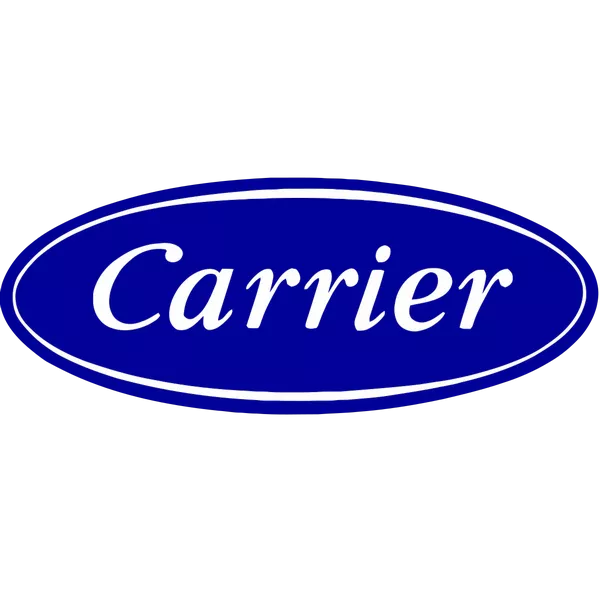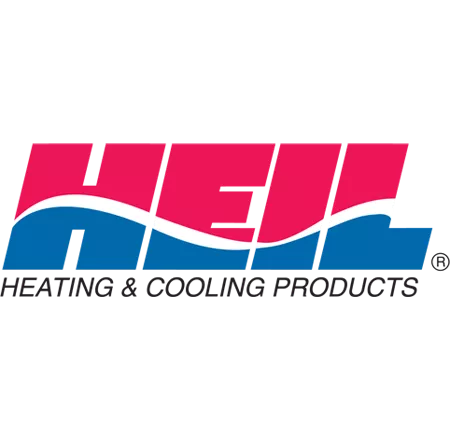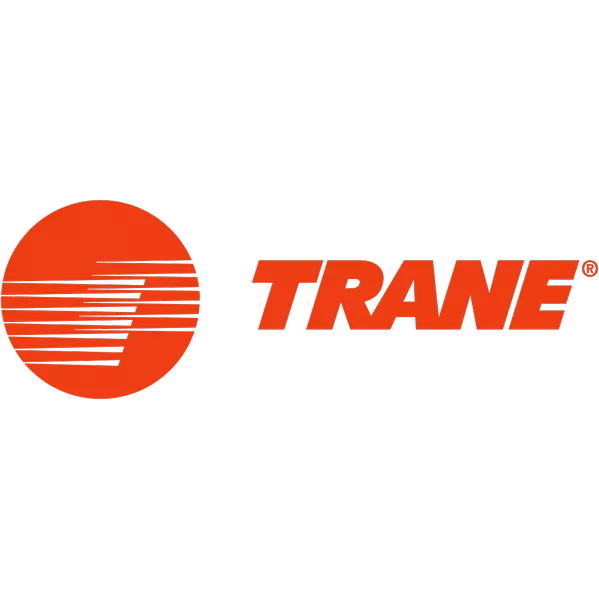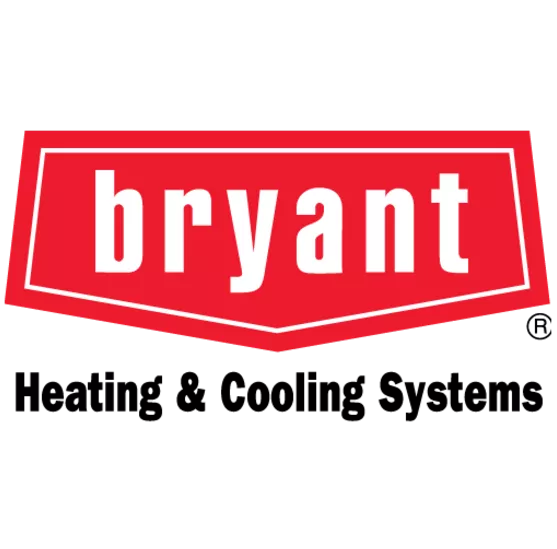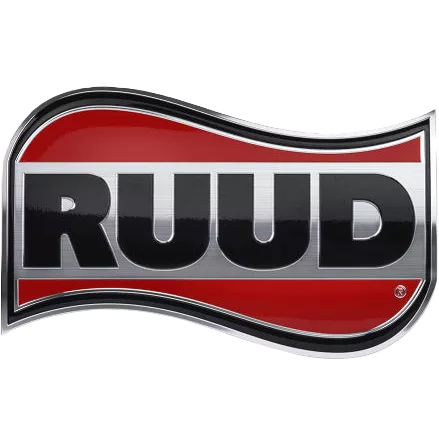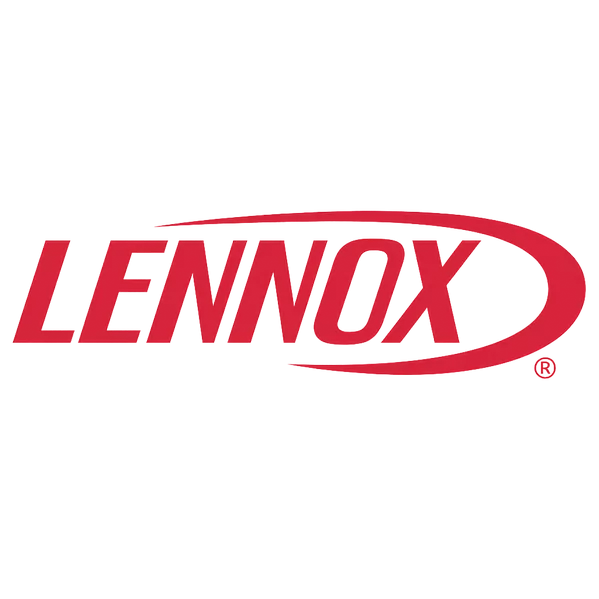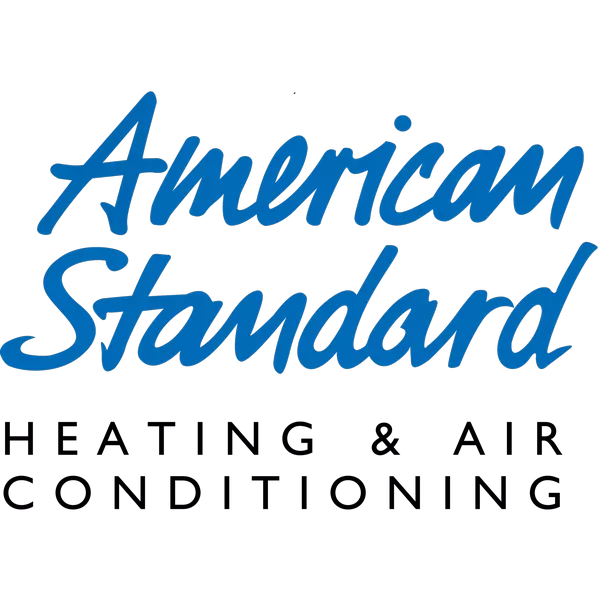Carrier: Instead of chasing specs in isolation, this portfolio puts most of its premium effort into how a matched system breathes as a whole — coil sizing, blower profiles, and control logic are written to live comfortably with real ductwork rather than only in lab rigs. The top tier doubles down on quiet low-speed operation, humidity control that does not need babysitting, and a dealer curriculum that treats commissioning as a checklist, not an art project. For this comparison, the stack is the Infinity 26 variable-speed central AC, Infinity 98 modulating gas furnace, and Infinity 24 variable-speed heat pump, and everything below is judged as they run together as one communicating set.
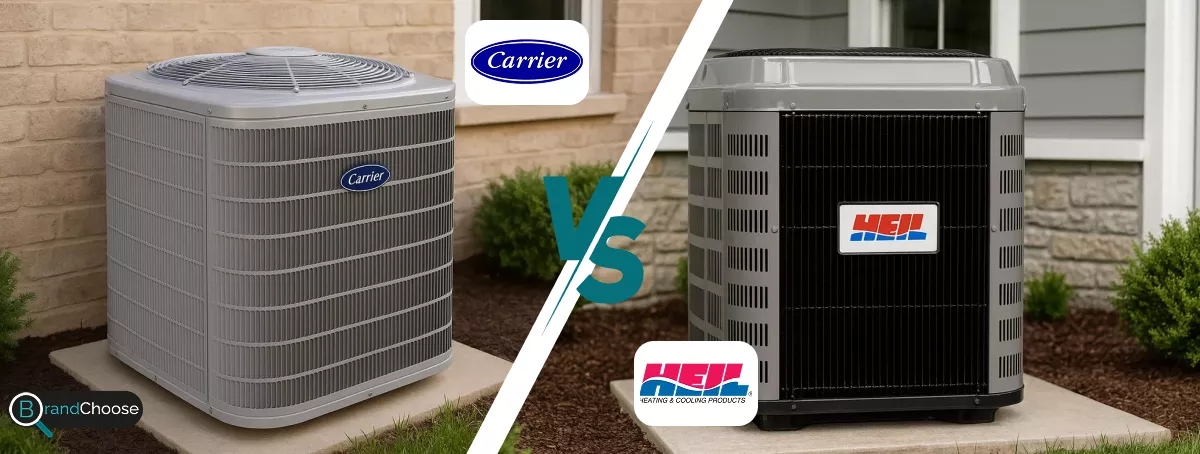
Heil: The flagship tier is built around pragmatic, installer-friendly hardware that shares a lot of engineering DNA across its family, then adds a straightforward control layer that does not demand constant tinkering from the homeowner. The emphasis is on balanced acoustics, sensible staging, and documented matchups that preserve features when scaling tonnage up or down. Here the focus is the Ion 21 Variable-Speed Air Conditioner, Ion 98 G97CMN modulating gas furnace, and Ion Variable-Speed Heat Pump HVH8, evaluated specifically as a matched, communicating system.
Product Selection
| Primary Use Case | Carrier | Heil | ||
| Air Conditioner | Infinity 26 | 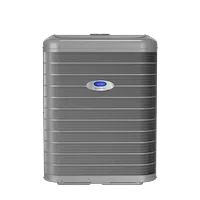 |
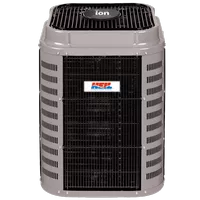 |
Ion 21 |
| Gas Furnace | Infinity 98 | 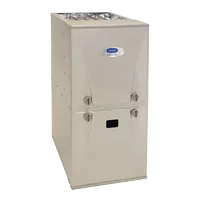 |
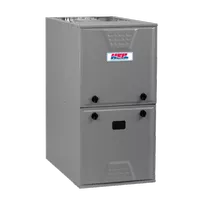 |
G97CMN |
| Heat Pump | Infinity 24 | 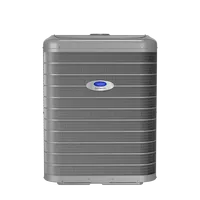 |
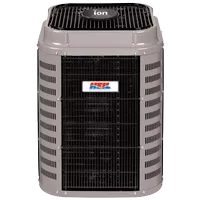 |
HVH8 |
🟦 Carrier: The catalog is intentionally linear — Infinity at the top, then Performance and Comfort — so stepping to variable capacity, lower sound, and deeper control feels like a clean rung up rather than a forked trail. The Infinity 26 + Infinity 98 + Infinity 24 HP trio is the reference build for homes that want tight humidity control and smooth ramps without sacrificing efficiency tiers. Published “recipes” that pair outdoor units, indoor coils or furnaces, and a communicating thermostat help keep ratings and comfort logic intact when moving between 2 to 4 tons.
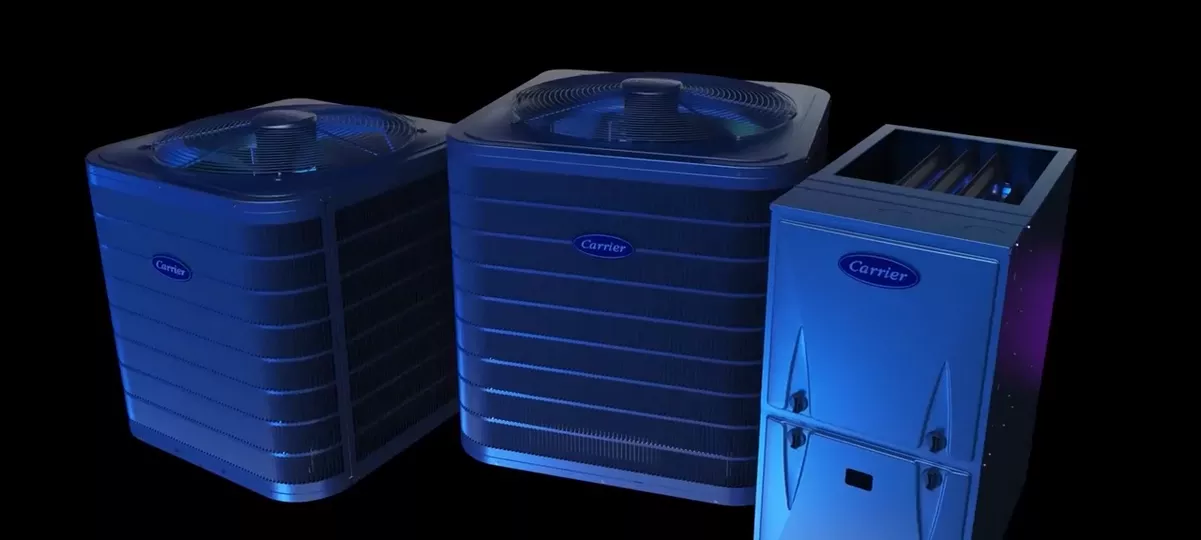
🟪 Heil: The ladder is equally clear — Ion at the top, then QuietComfort and Performance — with model families that scale predictably across sizes. The Ion 21 AC + G97CMN + HVH8 combination is a common premium choice when the brief is quiet, steady comfort and an upgrade path that does not require a control swap later. Matched-set charts specify coil and air-handler pairings that keep variable behavior and dehumidification features online as the house size changes.
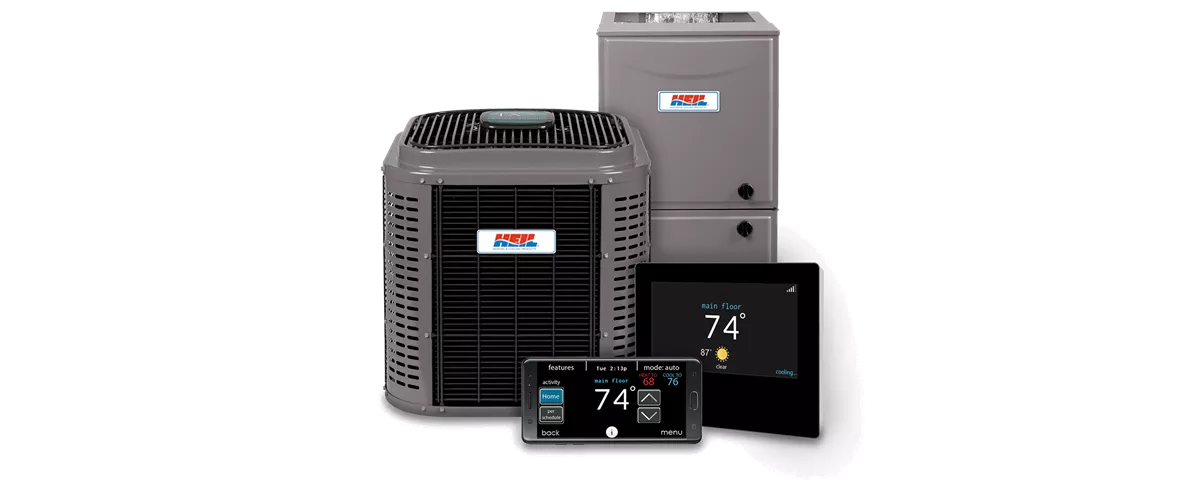
✅ Verdict: Carrier reads slightly more “plug and play” for shoppers, while Heil gives installers a very tidy map that scales cleanly without surprises.
Customer Support & Warranty
🟦 Carrier: Registration brings 10-year parts and robust heat-exchanger terms on the furnace, and dense dealer coverage in many metros means parts are on the truck or at the counter quickly. The communicating thermostat retains event logs and equipment IDs after swaps, so a mid-July call tends to be diagnose, part, done, not multiple visits. Where the network is thinner, outcomes still track well when the matched control is kept in place.
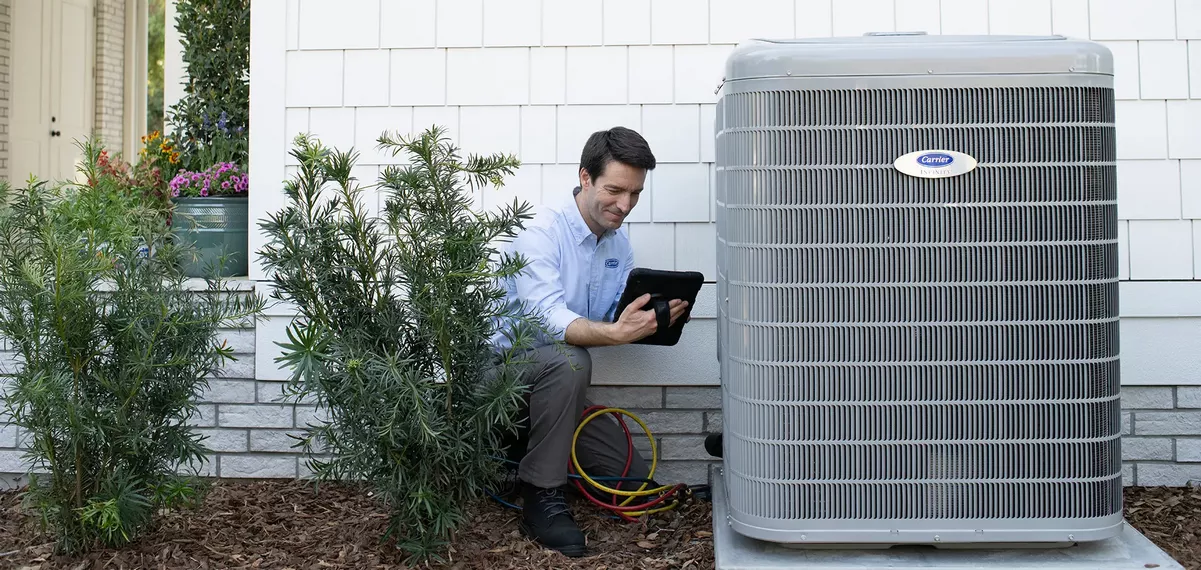
🟪 Heil: Registration likewise delivers 10-year parts at the flagship tier with strong exchanger coverage, and distributors routinely stock common boards, ECM motors, and sensors across the Ion family. Service remains predictable when the original communicating control is retained and matched coil pairings are followed, since diagnostics and feature flags stay intact after repairs. Regional density varies, but documentation is consistent, which helps keep timelines tight.
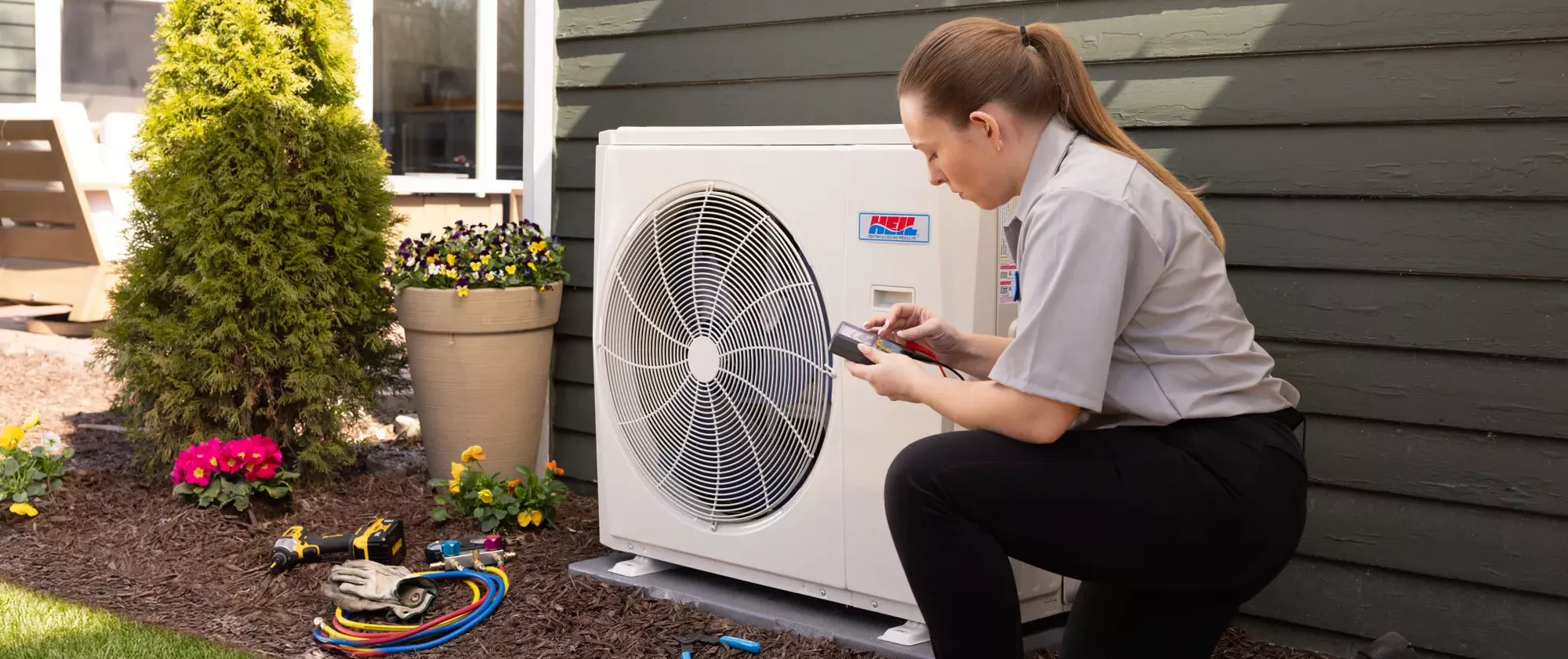
✅ Verdict: Carrier is the safer bet for coast-to-coast uniformity, while Heil is impressively smooth where its ICP distributor footprint is strong.
Energy Efficiency
🟦 Carrier: The flagship AC sits in the premium SEER2 bracket (SEER2 is today’s seasonal cooling efficiency test), the furnace operates in ultra-high AFUE territory (AFUE is gas furnace fuel-to-heat efficiency), and the variable-speed heat pump posts high HSPF2 results (HSPF2 is seasonal heating efficiency for heat pumps). Real savings come from partial-load behavior: an inverter compressor and ECM blower (ECM is an electronically commutated motor that modulates speed precisely) run long, low-power cycles that trim on-off losses while holding temperature and indoor humidity steady. With properly sealed ducts and charge verified by superheat and subcool checks (temperature confirmations that refrigerant is boiling and condensing in the right places), double-digit seasonal reductions versus 12–14 SEER legacy gear are routine.
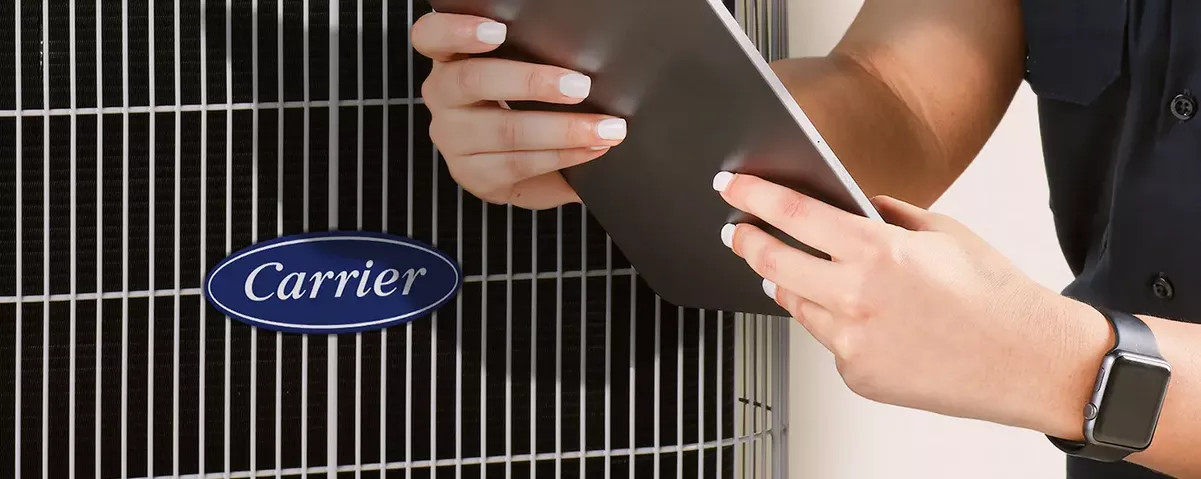
🟪 Heil: The Ion stack targets the same premium envelope; variable-capacity cooling with upper-tier SEER2, a modulating furnace in ultra-high AFUE, and a variable-speed heat pump tuned for strong HSPF2. The control favors long, quiet runs that keep coil temperature aligned to airflow, so humidity removal does not require dropping the setpoint, and efficiency holds in shoulder seasons instead of living only on paper. When airflow targets are near 350–400 cfm per ton (airflow per ton of cooling) and ducts are tight, households see reductions that track closely with flagship expectations.
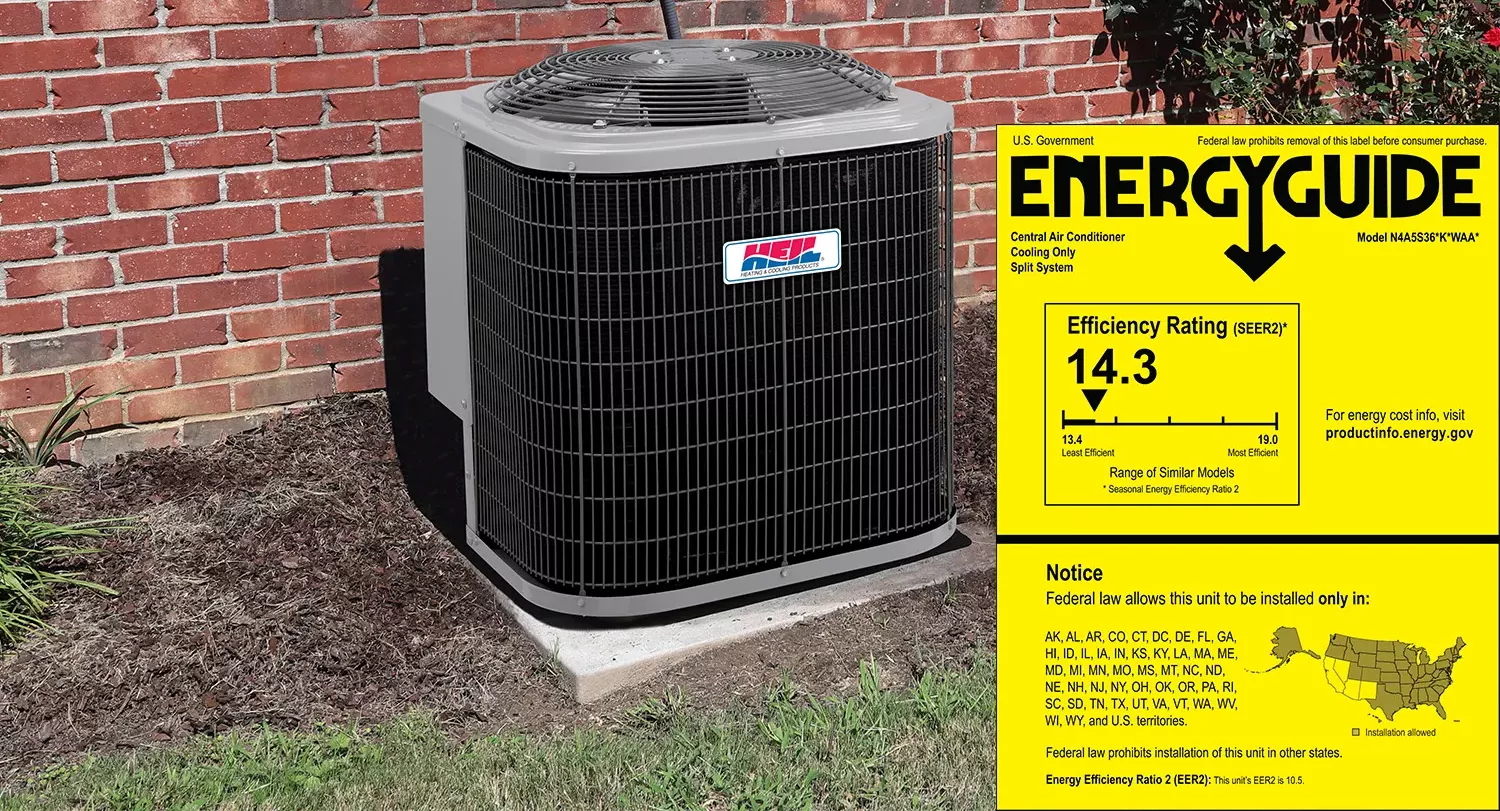
✅ Verdict: Carrier tends to post the splashier peak AC ratings, while Heil delivers efficiency that feels nearly identical day to day when sizing, airflow, and charge are disciplined.
Smart Features & Connectivity
🟦 Carrier: The Infinity System Control is a true communicating thermostat (the control and equipment share live data so modulation targets comfort rather than simple on off). It coordinates compressor speed, blower cfm, and coil temperature, manages zoning, and exposes detailed logs that point technicians to causes instead of symptoms. IAQ accessories slot into the same umbrella, so dehumidify-on-demand, ventilation, and filtration run without stepping on each other’s toes.
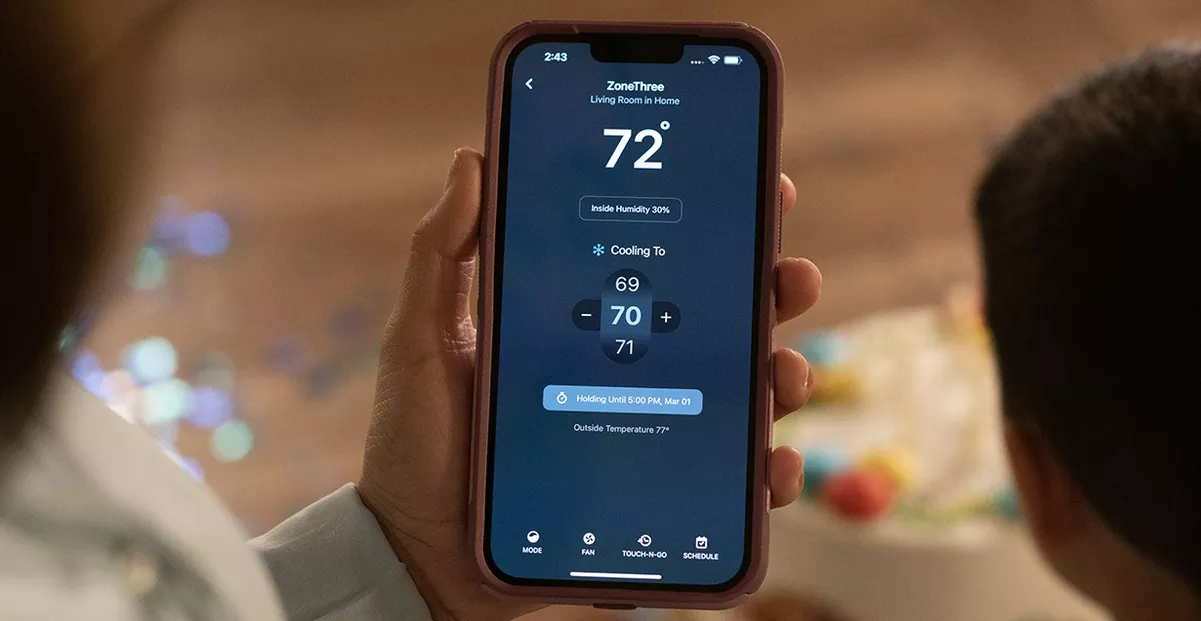
🟪 Heil: The Ion System Control offers communicating operation with zoning, humidity targets, clean app access, and diagnostics that surface coil and fan behavior clearly. Accessory integration is treated as part of the system, not bolt-ons, so adding filtration, UV or electronic cleaners, and ERV/HRV ventilation later (ERV/HRV bring in fresh air while exchanging heat or moisture) keeps the comfort logic intact. The interface is straightforward, which makes day-to-day ownership feel invisible.

✅ Verdict: Carrier brings deeper one-roof orchestration and very granular logs, while Heil counters with an approachable interface that preserves all the key communicating behavior buyers actually feel.
Noise Level
🟦 Carrier: At everyday loads the inverter and indoor ECM blower (electronically commutated motor that can modulate speed precisely) sit at modest rpm, so what you hear is a low wash rather than a distinct tone. Outdoor loudness is rated in dB (decibels, a logarithmic sound unit), but yard-side hush is won by avoiding sudden speed jumps and by isolating vibration at the base and line set. Inside the home, gentle ramp profiles keep airflow changes gradual; the real swing factor is external static pressure in the ducts (external static pressure is the resistance the blower pushes against, measured in inches of water column). When returns are generous and filter racks are sealed, the registers whisper even during long cycles.
🟪 Heil: The Ion-tier condenser is braced to keep panel chatter down while the inverter spends long stretches at low capacity, so neighbors hear air movement more than machinery. Indoors, the communicating control stages the blower into target airflow without abrupt steps, which keeps older trunks from “whooshing.” As with any premium setup, a level pad, a short flex section to decouple vibration, and proper clearance from walls reduce reflected noise and leave only a soft background presence.
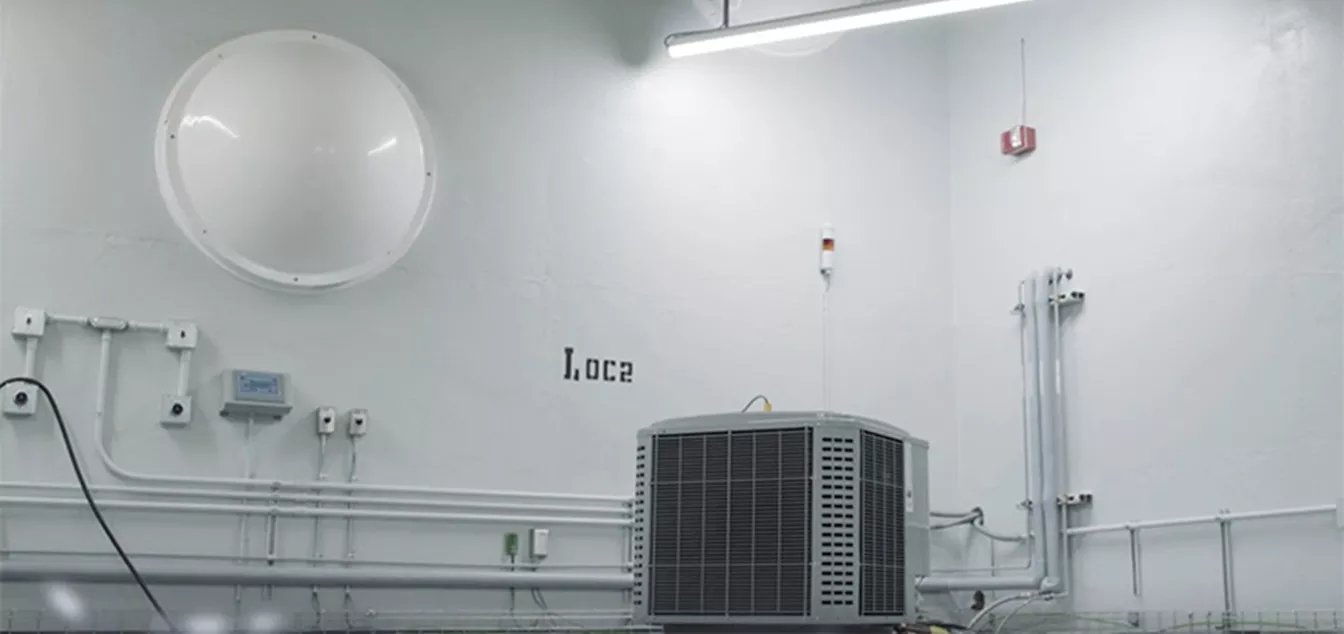
✅ Verdict: Carrier has a slight advantage at the registers when duct static is high, while Heil often sounds marginally softer outdoors at low capacity in tight lot lines.
Cost & Affordability
🟦 Carrier: Premium variable capacity commands premium installed pricing. Typical installed ranges for a 3-ton reference, standard labor, no duct replacement: AC only Infinity 26 with matched coil about 12,000–20,000 USD, furnace only Infinity 98 6,000–10,000 USD, heat pump only Infinity 24 13,000–22,000 USD. A matched AC + furnace usually falls 16,000–30,000 USD, and dual-fuel configurations often 18,000–34,000 USD. Electrical upgrades, crane access, and static-correction duct work can add 10–25 percent; rebates and off-season promos pull the other way.
🟪 Heil: Installed numbers track the same tier but tend to undercut by roughly 5–15% like for like. Common 3-ton ranges: AC only Ion 21 10,500–18,500 USD, furnace only G97CMN 5,500–9,500 USD, heat pump only HVH8 12,000–20,500 USD. A matched AC + furnace typically shows 15,000–28,000 USD, and dual-fuel about 17,000–31,000 USD. Accessories, zoning, and duct remediation widen spreads more than the logo does.
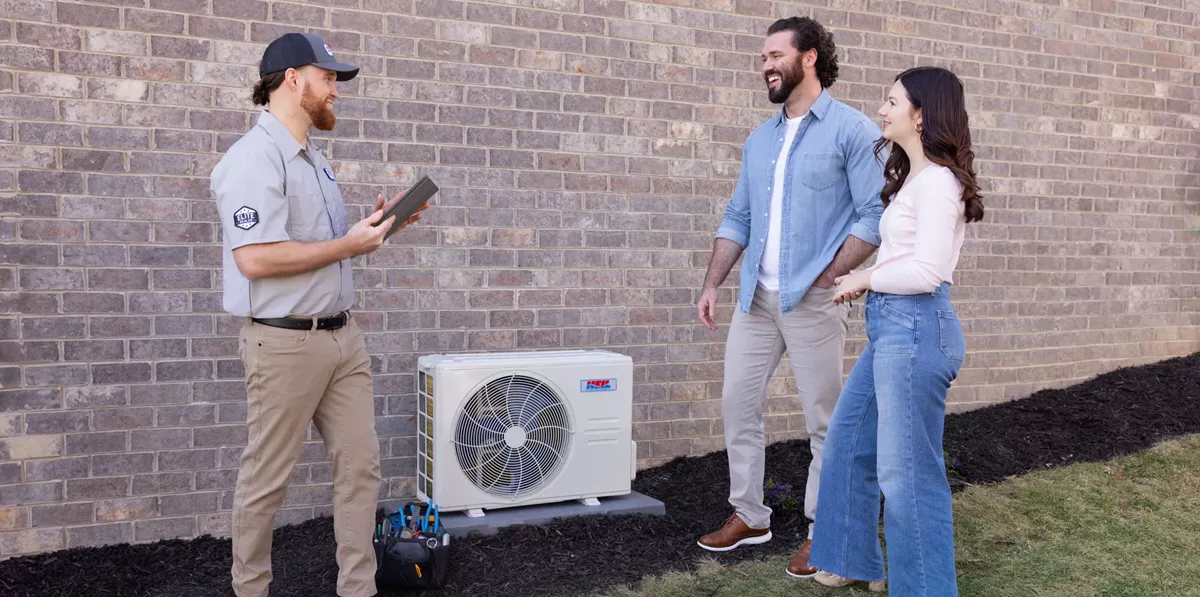
✅ Verdict: Carrier prices at the higher side of premium, while Heil usually lands the sharper quote for comparable variable-capacity comfort.
Reliability & Durability
🟦 Carrier: Cabinets use coated steel and all-aluminum coils that resist formicary corrosion over time (formicary corrosion is microscopic copper pitting sparked by household organics). The communicating control logs faults and operating data so intermittent problems are traceable, and soft starts keep compressor stress down in July heat. As always, longevity hinges on fundamentals: weigh-in charging verified by superheat and subcool checks (temperature confirmations that refrigerant is boiling and condensing where it should), airflow near 350–400 cfm per ton (target airflow per ton of cooling), and clean indoor and outdoor coils.
🟪 Heil: The Ion family shares proven component sets across sizes, which keeps parts commonality high and service straightforward at ICP distributors. Aluminum coils maintain heat transfer when kept clean, and the communicating thermostat preserves diagnostics after board swaps. Real-world outcomes still rise or fall on commissioning discipline, sealing returns, setting airflow to spec, and confirming charge; but when those boxes are ticked, the platform settles into long, quiet cycles with few surprises.
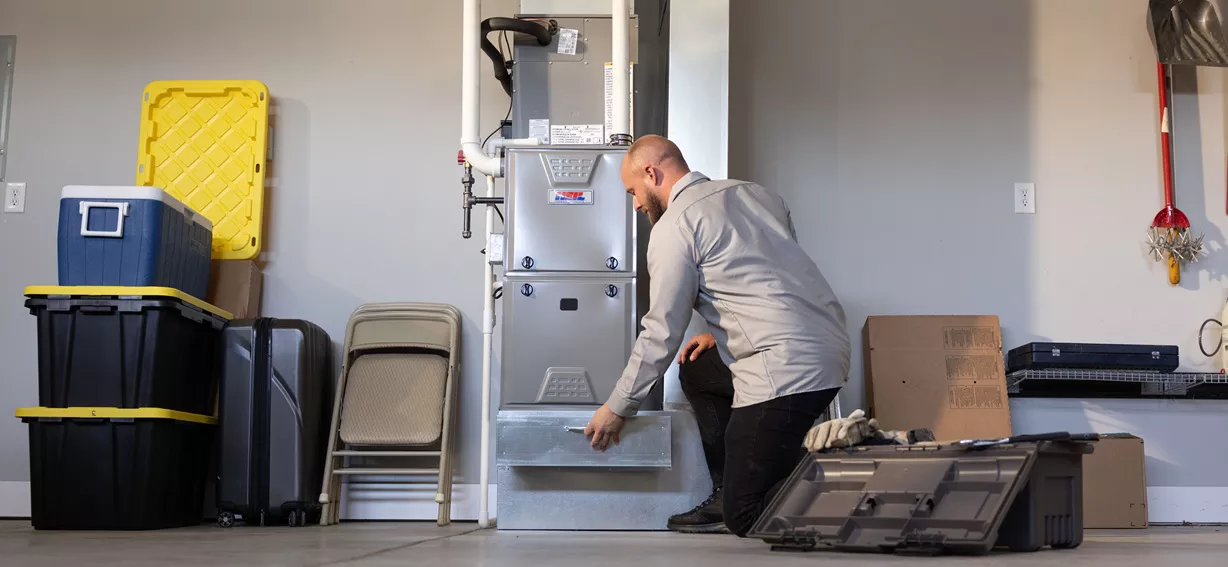
✅ Verdict: Carrier earns points for deep diagnostic logging and broad parts pipelines, while Heil matches on hardware toughness and benefits from strong ICP stocking where that network is dense.
Cooling Performance
🟦 Carrier: Modulation keeps the evaporator just cold enough to handle sensible and latent load together (sensible is temperature change, latent is moisture removal). During humidity pulls the control trims cfm per ton so the coil stays colder longer, lifting moisture pickup without overshooting the thermostat. In practice you see a stable supply-air delta-T across the coil (delta-T is the return-to-supply temperature drop) and indoor RH holding mid-40s to near-50 percent through muggy afternoons, so rooms feel cool without clamminess.
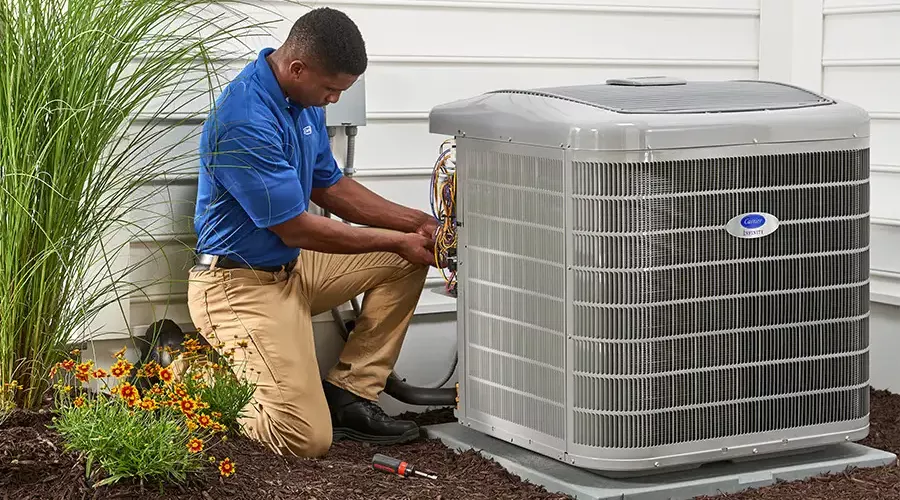
🟪 Heil: Low-speed depth is used to keep coil temperature and airflow aligned, which manages SHR to a comfortable balance (SHR, sensible heat ratio, is the share of total cooling devoted to temperature rather than moisture). Longer, quieter cycles push air consistently to far branches, so end-of-run rooms drift less while humidity stays in check without dialing the setpoint down. With a matched coil and confirmed charge, the comfort profile is calm, even, and not dependent on short, hard bursts.

✅ Verdict: Carrier leans into aggressive dehumidify-on-demand for tight RH control, while Heil excels at smooth low-speed moisture removal that keeps spaces dry without chasing lower setpoints.
Heating Performance
🟦 Carrier: The set pairs a finely modulating gas furnace with a variable-speed heat pump, then lets the communicating control decide which heat source should lead the hour. On cold, dry nights the furnace ramps quietly with small fuel steps and a variable ECM blower (electronically commutated motor that adjusts speed precisely), which keeps supply air warm and steady without blast-then-coast swings. In milder weather the heat pump carries the load at low speed, and defrost is managed to limit cool-air drafts by coordinating blower ramp and compressor timing. Dual fuel is tuned around a balance point (the outdoor temperature where gas becomes cheaper or more comfortable than electric), so operation toggles based on real economics rather than fixed dates.
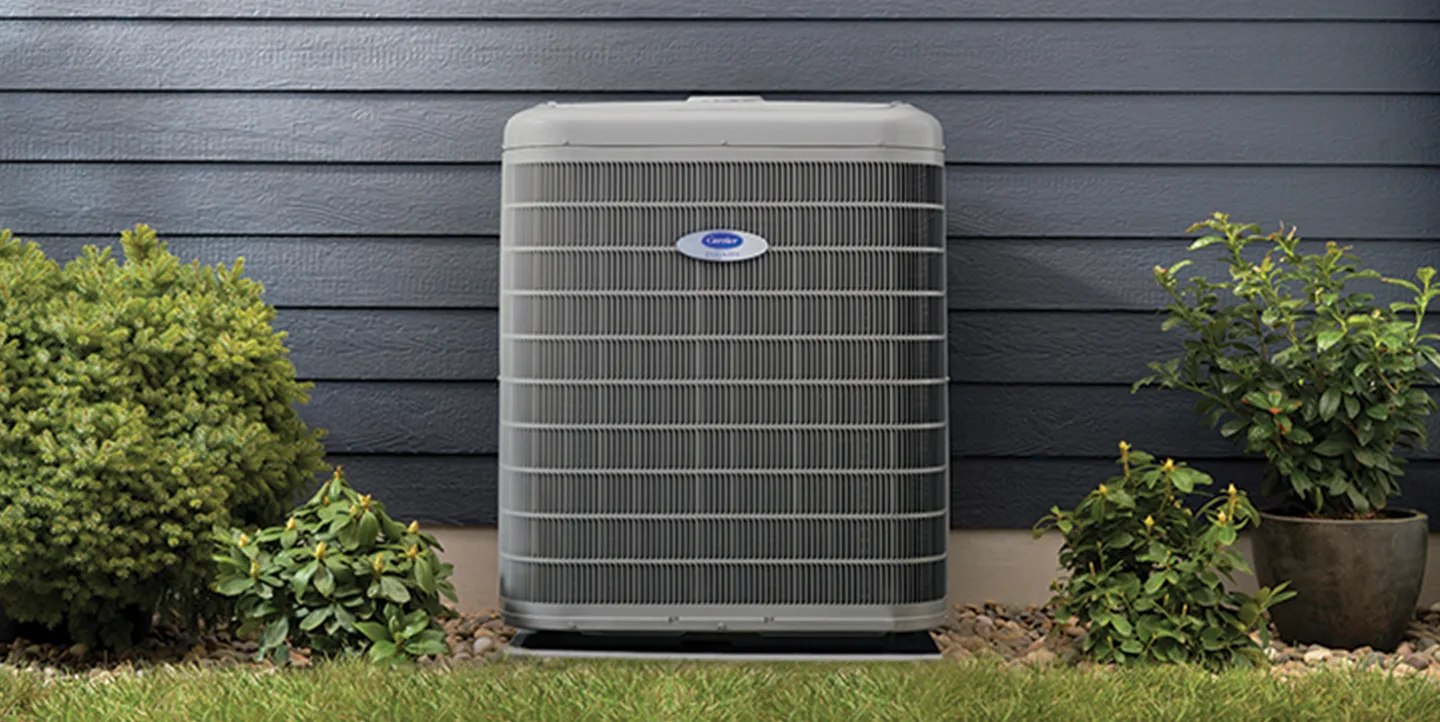
🟪 Heil: The trio follows the same premium playbook, using a modulating furnace and an inverter heat pump to keep rooms even through long winter runs. On shoulder-season days the heat pump holds low capacity to avoid cycling, and the communicating control stages the blower so post-defrost recovery does not feel chilly at the registers. When temperatures sink, the system transitions to gas at a dialed-in balance point to protect both comfort and cost, and the appliance mix scales neatly across tonnages without losing that steady-room feel.
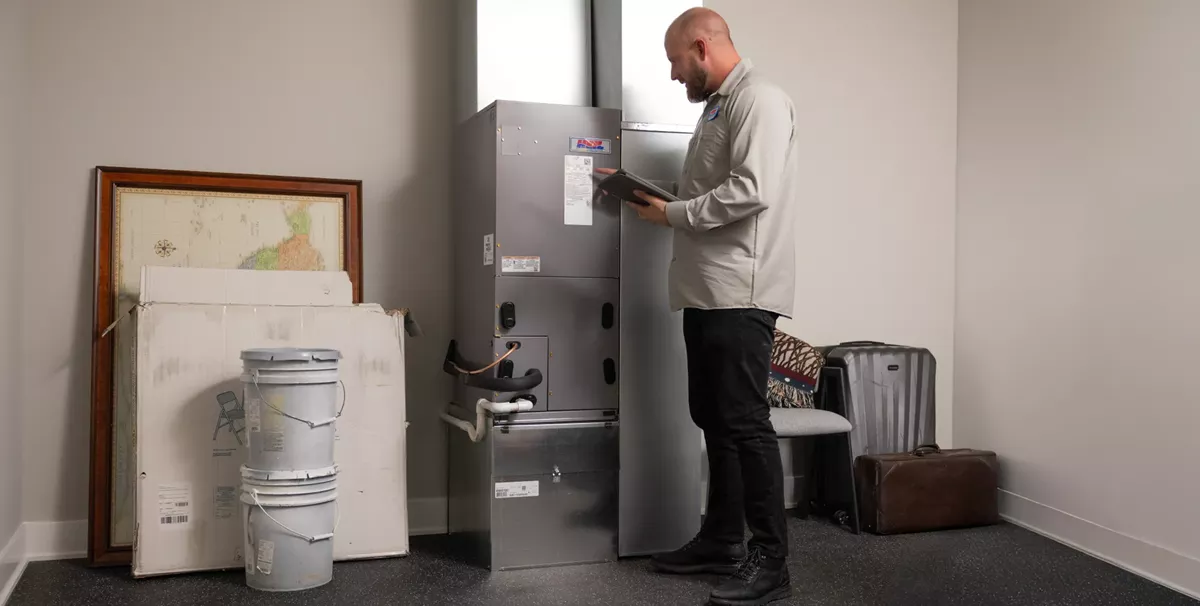
✅ Verdict: Carrier feels a touch more seamless at the handoff between electric and gas on dual fuel, while Heil is exceptionally composed during shoulder-season heat pump runs.
Indoor Air-Quality Enhancements
🟦 Carrier: The control treats IAQ as part of the system, not an afterthought. High-MERV media cabinets slot in cleanly (MERV rates how small a particle a filter can capture), whole-home humidifiers and dehumidifiers are coordinated with blower speed, and balanced ventilation adds ERV/HRV where needed (ERV/HRV bring in fresh air while exchanging heat or moisture). During humid months the logic trims cfm per ton (airflow per ton of cooling) so the coil stays a bit colder, pulling moisture without overcooling rooms; in winter, airflow and humidification targets are adjusted to avoid static-dry air. Diagnostics keep logs intact after IAQ upgrades, which makes seasonal tune-ups faster and more consistent.

🟪 Heil: The control treats IAQ as part of the system, not an afterthought. High-MERV media cabinets slot in cleanly (MERV rates how small a particle a filter can capture), whole-home humidifiers and dehumidifiers are coordinated with blower speed, and balanced ventilation adds ERV/HRV where needed (ERV/HRV bring in fresh air while exchanging heat or moisture). During humid months, the logic trims cfm per ton (airflow per ton of cooling) so the coil stays a bit colder, pulling moisture without overcooling rooms; in winter, airflow and humidification targets are adjusted to avoid static-dry air. Diagnostics keep logs intact after IAQ upgrades, which makes seasonal tune-ups faster and more consistent.

✅ Verdict: Carrier offers slightly tighter one-umbrella choreography of filtration, humidity, and ventilation, while Heil keeps pressures and airflow targets highly predictable once IAQ pieces are added.
Installation & Serviceability
🟦 Carrier: Premium results start with Manual J load, Manual S selection, and Manual D duct design, then move to field realities like verified airflow and precise charge. Commissioning targets 350 to 400 cfm per ton, total external static at or below equipment ratings, deep evacuation, and charge confirmation using superheat and subcool readings (superheat and subcool confirm refrigerant is boiling and condensing in the right places). The communicating thermostat exposes coil, compressor, and fan data along with event logs, so techs can validate delta-T at the coil quickly (delta-T is return-to-supply temperature change). Large access panels and clear board layouts keep maintenance straightforward.
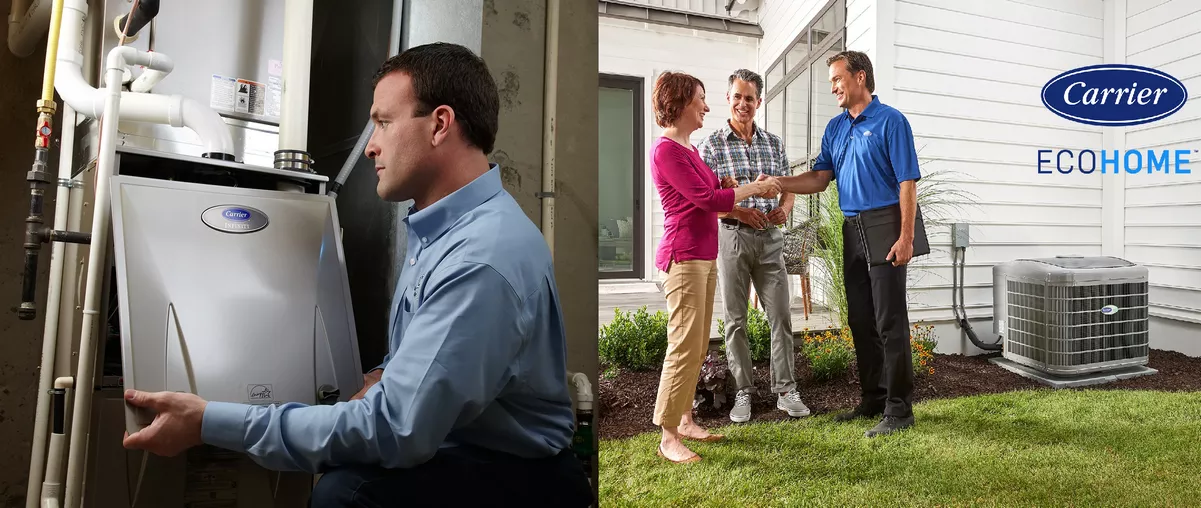
🟪 Heil: The same discipline applies, with matched-set charts that lock in the right coil and control pairings so variable capacity behaves as designed after a repair. Service access is direct, boards are labeled clearly, and the thermostat surfaces airflow and temperature data to shorten diagnostics. When returns are upsized and filter racks sealed, static falls in line and low-speed operation stays quiet, which is often the difference between “works” and “feels premium.”
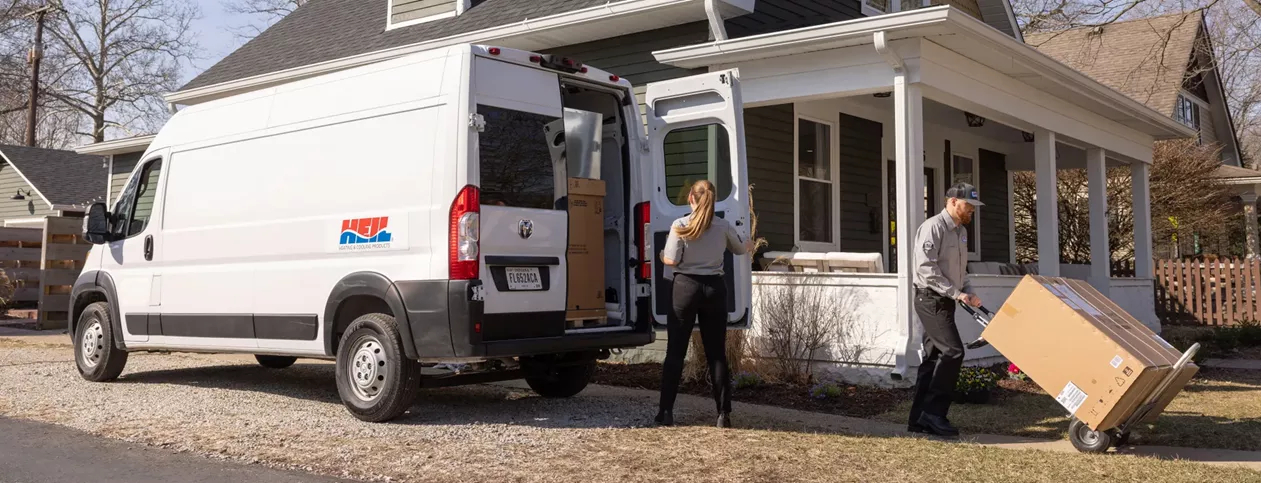
✅ Verdict: Carrier brings excellent logs and a very mature commissioning flow, while Heil rewards by-the-book installs with fast service and stable, quiet operation year round.
Quick Buyer Match Guide
🟦🟦 Choose Carrier if you
Carrier brings excellent logs and a very mature commissioning flow, while Heil rewards by-the-book installs with fast service and stable, quiet operation year round.
🟪🟪 Choose Heil if you
You want premium variable-capacity comfort that prices a bit friendlier in many quotes, an IAQ path that keeps airflow targets sane, and a communicating control that is straightforward for day-to-day use.

